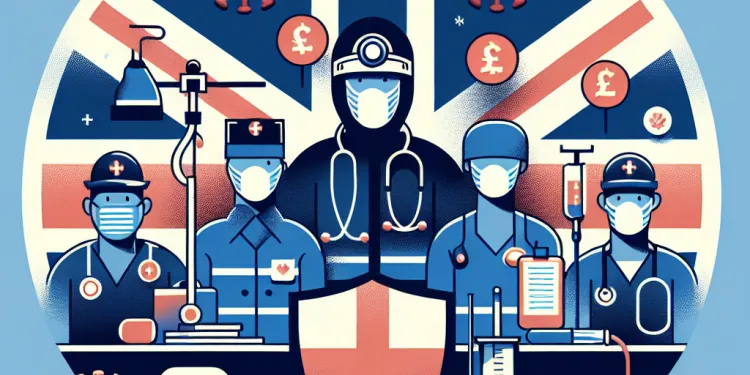
Find Help
More Items From Ergsy search
-

What is the mortality rate of Marburg virus disease?
Relevance: 100%
-

What is the Marburg Virus?
Relevance: 66%
-

What are the symptoms of Marburg virus disease?
Relevance: 66%
-

What is the mortality rate of Nipah Virus infection?
Relevance: 62%
-

What is the typical progression of Marburg virus disease?
Relevance: 62%
-

How is Marburg virus disease diagnosed?
Relevance: 61%
-

Can Marburg virus disease be prevented?
Relevance: 61%
-

Can Marburg virus disease recur after recovery?
Relevance: 60%
-

Is there a vaccine for Marburg virus?
Relevance: 60%
-

Is the Marburg virus related to the Ebola virus?
Relevance: 60%
-

Has Marburg virus caused any major outbreaks?
Relevance: 57%
-

What research is being done on the Marburg virus?
Relevance: 56%
-

How do health authorities confirm a Marburg virus outbreak?
Relevance: 55%
-

Are there any countries at higher risk for Marburg virus outbreaks?
Relevance: 48%
-

Where was the Marburg virus first discovered?
Relevance: 48%
-

How is the Marburg virus transmitted?
Relevance: 48%
-

What is the mortality rate of untreated bubonic plague?
Relevance: 47%
-

How long is the incubation period for the Marburg virus?
Relevance: 45%
-

What measures are being taken to control Marburg virus outbreaks?
Relevance: 45%
-

How can healthcare workers protect themselves from Marburg virus infection?
Relevance: 41%
-

What is Nipah Virus?
Relevance: 32%
-

Can Nipah Virus cause neurological complications?
Relevance: 31%
-

Is there a cure for Nipah Virus?
Relevance: 31%
-

What is the Ebola virus?
Relevance: 28%
-

Why are Nipah Virus outbreaks considered a public health concern?
Relevance: 28%
-

What are the symptoms of Nipah Virus infection?
Relevance: 28%
-

Can Nipah Virus cause outbreaks?
Relevance: 26%
-

Has a vaccine been developed against Nipah Virus?
Relevance: 26%
-

What global organizations are involved in Nipah Virus research?
Relevance: 25%
-

What are the treatment options for Marburg virus disease?
Relevance: 25%
-

Where was Nipah Virus first identified?
Relevance: 24%
-

What should someone do if they suspect Nipah Virus infection?
Relevance: 22%
-

How is Nipah Virus transmitted?
Relevance: 22%
-

How does vaccination affect measles rates?
Relevance: 22%
-

Can vaccines cause the diseases they protect against?
Relevance: 21%
-

Do all mutations in the virus lead to new variants?
Relevance: 21%
-

What is West Nile Virus?
Relevance: 20%
-

Are UK mosquitoes capable of transmitting Zika virus?
Relevance: 20%
-

Who is at risk for severe illness from West Nile Virus?
Relevance: 20%
-

What diseases are spread by mosquitos in the UK in 2025?
Relevance: 20%
Introduction to Marburg Virus Disease
Marburg virus disease is a severe and often fatal illness in humans that belongs to the same family as the Ebola virus. This virus is known to cause hemorrhagic fever and is named after the city of Marburg in Germany, where it was first identified in 1967. Outbreaks of Marburg virus disease are rare, but when they occur, they pose a significant public health challenge due to their high mortality rates and potential for rapid transmission.
Understanding Mortality Rates
The mortality rate of a disease refers to the percentage of people who die as a result of contracting the disease. In the case of Marburg virus disease, the mortality rate can be alarmingly high. Historical data from past outbreaks show that the mortality rate of Marburg virus disease ranges from 24% to 88%. The variation in mortality rates depends on several factors, including the virulence of the virus strain, the location of the outbreak, the access to and quality of medical care, and the early identification and isolation of cases.
Factors Influencing Mortality Rates
Multiple factors influence the mortality rate of Marburg virus disease. The virulence of the specific strain of the Marburg virus is one of the primary determinants. Different outbreaks have demonstrated varying severity levels, affecting mortality rates accordingly. Additionally, the healthcare infrastructure in the affected area plays a crucial role. In regions with robust healthcare systems and rapid response capabilities, mortality rates tend to be lower.
Another critical factor is the timeliness and effectiveness of interventions, such as the isolation of patients, tracing and monitoring of contacts, and community awareness campaigns. Early detection and supportive care, including the management of symptoms and complications, significantly improve patient outcomes.
Comparisons with Other Viral Hemorrhagic Fevers
When comparing Marburg virus disease to other viral hemorrhagic fevers, such as Ebola, the mortality rates are similarly high, though both diseases differ in various aspects. The World Health Organization (WHO) emphasizes the need for rapid response and international cooperation to control outbreaks effectively. Although Marburg virus has a high mortality rate, overall mortality can be minimized through organized public health measures and preparedness.
Conclusion
In summary, the mortality rate of Marburg virus disease is notably high, fluctuating between 24% and 88%, influenced by numerous factors such as viral strain and healthcare infrastructure. Understanding the dynamics of this disease and enhancing readiness to address potential outbreaks are vital to reducing mortality. It remains crucial for the global community to stay informed and prepared to manage this rare yet deadly disease effectively.
What is Marburg Virus Disease?
Marburg virus disease is a very serious illness. It often makes people very sick and can lead to death. It is similar to Ebola. The virus was first found in Marburg, Germany, in 1967. Outbreaks of this disease do not happen often, but when they do, they can spread quickly and lead to many deaths.
What is a Death Rate?
A death rate tells us how many people die from a disease. For Marburg virus disease, the death rate is high. In the past, between 24% and 88% of people who got sick with Marburg died. How deadly the virus is can change because of different things. These include how strong the virus is, how good the hospitals are, and how quickly sick people are found and given help.
What Affects the Death Rates?
Many things can change how deadly Marburg virus disease is. One big factor is how strong the virus is in each outbreak. Some outbreaks are more serious than others. Good healthcare is very important. Places with better hospitals and quick help usually have fewer deaths.
It's also important to act fast to help sick people. This includes keeping sick people away from others and checking who they have been near. Teaching the community about the disease can also help. If the disease is found early and treated well, more people get better.
How Does It Compare to Other Diseases?
Marburg virus disease is like Ebola because both can be very deadly. The World Health Organization (WHO) says it's important to act quickly and work together to stop outbreaks. Even though Marburg can have a high death rate, we can reduce the number of deaths by being prepared and organized with health measures.
In Conclusion
In short, Marburg virus disease can be very deadly, with death rates between 24% and 88%. Many things affect how deadly it is, like the type of virus and how good the healthcare is. It's crucial to understand and be ready for outbreaks to help save lives. Staying informed and prepared is key to handling this serious disease.
Frequently Asked Questions
What is the mortality rate of Marburg virus disease?
The mortality rate for Marburg virus disease can be as high as 88%, but it varies depending on the outbreak and the management of cases.
Why does the mortality rate of Marburg virus disease vary?
The mortality rate varies due to factors like virus strain, quality of patient care, and how quickly the outbreak is identified and controlled.
Has the mortality rate of Marburg virus disease improved over time?
With better medical care and outbreak management, mortality rates have shown variation but not consistent improvement due to challenges in treatment.
What factors contribute to high mortality rates in Marburg virus disease?
Factors include the lack of specific treatment, late diagnosis, and limited healthcare resources in affected areas.
Are there any treatments that reduce the mortality rate of Marburg virus disease?
There is no specific antiviral treatment available; supportive care is crucial to improve patient outcomes.
How does the Marburg virus disease mortality rate compare with Ebola?
Both diseases have high mortality rates, but Marburg can be slightly less lethal with an overall range of 24% to 88% in different outbreaks, similar to Ebola.
What was the highest recorded mortality rate for a Marburg virus disease outbreak?
The highest recorded mortality rate for a Marburg outbreak was around 88%.
What was the lowest recorded mortality rate for a Marburg virus disease outbreak?
The lowest recorded mortality rate was about 24%, depending on the outbreak conditions and medical interventions.
How does early detection impact the mortality rate of Marburg virus disease?
Early detection can significantly reduce the mortality rate by enabling timely medical intervention and outbreak control measures.
Do all strains of the Marburg virus have the same mortality rate?
No, different strains may have varying mortality rates, influenced by viral genetics and outbreak conditions.
How does healthcare infrastructure affect Marburg virus disease mortality?
Better healthcare infrastructure can lower mortality rates by providing timely treatment, isolation, and infection control.
What role does public health response play in the mortality rate of Marburg virus disease?
A robust public health response can lower mortality rates by ensuring rapid identification and isolation of cases.
Can vaccination reduce the mortality rate of Marburg virus disease?
As of now, there is no widely available vaccine for Marburg virus disease, though research is ongoing.
How do co-infections affect the mortality rate of Marburg virus disease?
Co-infections can complicate treatment and potentially increase the mortality rate by weakening patient health.
How does Marburg virus disease's mortality rate impact public perception?
The high mortality rate often causes fear and necessitates strong public health measures to manage outbreaks.
Do socioeconomic factors influence the mortality rate of Marburg virus disease?
Yes, areas with limited resources may face higher mortality rates due to challenges in accessing healthcare.
Is the mortality rate consistent across different regions for Marburg virus disease?
Mortality rates can vary by region due to differences in healthcare access, response capacity, and outbreak management.
What measures can be taken to reduce the mortality rate of Marburg virus disease?
Measures include improving healthcare access, training medical personnel, and ensuring rapid outbreak response.
How does isolation and quarantine impact the mortality rate of Marburg virus disease?
Effective isolation and quarantine can lower the mortality rate by preventing the spread and allowing focused care for patients.
Can advancements in diagnostics influence the mortality rate of Marburg virus disease?
Yes, improved diagnostics can contribute to earlier detection and treatment, potentially lowering the mortality rate.
How many people die from Marburg virus disease?
Marburg virus disease can make people very sick. It is important to know how many people get better and how many do not. This is called the death rate.
If you need help understanding, you can:
- Ask someone to read with you.
- Use a dictionary to look up hard words.
- Read slowly and ask questions if you do not understand.
The Marburg virus disease is very dangerous. Up to 88 out of every 100 people who get it might die. How many people it affects can change depending on how it's managed and where it breaks out.
Why do some people die from Marburg virus disease more than others?
The number of people who get very sick or die can be different. It depends on things like the type of virus, how good the doctors and nurses are, and how fast people find and stop the illness from spreading.
Is the death rate from Marburg virus disease getting better over time?
Doctors and nurses are getting better at helping people when they are sick. But, still, some people do not get better because taking care of really sick people is still hard.
What makes people very sick or die from Marburg virus?
Here are some reasons:
- The virus spreads quickly in the body.
- It can cause bleeding inside and outside the body.
- There is no specific medicine to cure it.
- It's hard to treat because it happens suddenly and gets worse fast.
- Doctors can help by giving fluids and care in a hospital.
Some tools that can help understand more:
- Ask someone to read it with you.
- Use pictures to learn how the virus works.
There are a few reasons why this happens:
- There is no special medicine to make it better.
- People often find out about it too late.
- Many places do not have enough doctors and nurses.
It can help to use simple tools or get someone to assist you in finding information.
Can treatments help people live when they have Marburg virus?
There is no special medicine to fight the virus. Helping the person feel better is very important.
Which is more deadly: Marburg virus or Ebola?
This means: Which virus kills more people, Marburg virus or Ebola?
Both of these sicknesses can cause many people to die. But sometimes, Marburg is a little less deadly. It can cause between 24% and 88% of people to die in different times it has spread, kind of like Ebola.
Here are some tools and tips to help you understand this better:
- Look at pictures or charts about these diseases to see how they spread.
- Ask someone to explain difficult words or ideas.
- Watch a video about Marburg and Ebola to make it easier to understand.
What is the highest number of people who died in a Marburg virus outbreak?
The Marburg virus is a kind of germ that can make people very sick. Sometimes, many people can get sick and die if it's not controlled. We call this an "outbreak."
Please use simple tools, like using pictures or videos, to help understand more about it.
A lot of people got very sick from something called Marburg. Out of 100 people, 88 people did not get better. This is a very high number.
What was the lowest number of deaths from a Marburg virus outbreak?
The Marburg virus can make people very sick. Sometimes, it can even cause death. We want to know about the time when the least number of people died because of this virus.
To help understand better, you can use pictures or talk to someone who knows about health.
The lowest number of people who died because of the sickness was about 24 out of every 100 people. This number could change based on how well doctors could help and what things were happening at the time.
How does finding Marburg virus early help save lives?
If we find the Marburg virus early, doctors can help people sooner. This means more people can get better, and fewer people will die.
To understand more about the Marburg virus, you can look at pictures or watch videos. These tools can help you learn.
Finding problems early can help save lives. It means doctors can help sooner, and can stop more people from getting sick.
Do all types of the Marburg virus cause the same number of deaths?
The Marburg virus is a type of germ that can make people very sick. This question asks if every kind, or "strain," of the Marburg virus is just as deadly.
Some strains might make more people die than others. This means the number of people who die from the virus can change depending on the type.
It can help to look at charts or pictures to understand this better. You could also talk to someone you trust who knows about health.
No, not all kinds of a virus are the same. Some can be more dangerous than others. It depends on the virus itself and what is happening around it.
You can use pictures or videos to help understand this better.
How do doctors and hospitals help people with Marburg virus get better?
Better healthcare buildings and services can help more people live. They do this by giving quick medical help, keeping sick people away from others, and stopping germs from spreading.
How does helping people affect the number of deaths from Marburg virus?
A strong public health response can help save lives. It does this by finding people who are sick quickly and making sure they stay away from others.
Can getting a vaccine help stop people from dying from Marburg virus?
Right now, there is no vaccine for Marburg virus disease that everyone can get. Scientists are still working on it.
How do having other germs with Marburg virus change the number of people who die from it?
Having more than one infection at the same time can make it harder for doctors to help. It can also make people sicker and sometimes lead to death.
How does the death rate of Marburg virus affect what people think?
The number of people who die from the Marburg virus can change how people feel and think about the virus. Here is how it can affect people:
- Fear: If many people die from the virus, more people might feel scared.
- Attention: When the virus is more deadly, people pay more attention to news about it.
- Action: High death rates might make people act quickly to stay safe, like washing hands or getting a vaccine if there is one.
- Support: People might want to learn more about the virus and help those who are sick.
If you want to understand more or keep track of news, try using picture aids or listening to information through audio to make it easier.
A lot of people get scared when many people get sick and die. We need strong health rules to stop sickness from spreading.
Do things like money and jobs change how many people die from Marburg virus?
Yes, places with fewer doctors and hospitals might have more people getting sick and not enough help. This can make more people die because they can't get to a doctor.
Do people die from Marburg virus the same way everywhere?
How often people get very sick or die can be different in each place. This is because some places have better doctors and hospitals. They can also handle big health problems better.
How can we help stop people from dying from Marburg virus?
We can do some things to help people stay healthy. These things include making it easier for people to see a doctor, teaching doctors and nurses to be better helpers, and acting quickly when people start getting sick to stop it from spreading.
How do staying alone and staying away from others affect how many people die from Marburg virus illness?
Staying away from others when you are sick can stop germs from spreading to more people. This helps doctors and nurses take care of sick people better.
Can better medical tests help save lives from Marburg virus?
Yes, better medical tests can help find and treat problems sooner, which might save more lives.
Useful Links
- Ergsy carfully checks the information in the videos we provide here.
- Videos shown by Youtube after a video has completed, have NOT been reviewed by ERGSY.
- To view, click the arrow in centre of video.
- Most of the videos you find here will have subtitles and/or closed captions available.
- You may need to turn these on, and choose your preferred language.
- Go to the video you'd like to watch.
- If closed captions (CC) are available, settings will be visible on the bottom right of the video player.
- To turn on Captions, click settings .
- To turn off Captions, click settings again.
More Items From Ergsy search
-

What is the mortality rate of Marburg virus disease?
Relevance: 100%
-

What is the Marburg Virus?
Relevance: 66%
-

What are the symptoms of Marburg virus disease?
Relevance: 66%
-

What is the mortality rate of Nipah Virus infection?
Relevance: 62%
-

What is the typical progression of Marburg virus disease?
Relevance: 62%
-

How is Marburg virus disease diagnosed?
Relevance: 61%
-

Can Marburg virus disease be prevented?
Relevance: 61%
-

Can Marburg virus disease recur after recovery?
Relevance: 60%
-

Is there a vaccine for Marburg virus?
Relevance: 60%
-

Is the Marburg virus related to the Ebola virus?
Relevance: 60%
-

Has Marburg virus caused any major outbreaks?
Relevance: 57%
-

What research is being done on the Marburg virus?
Relevance: 56%
-

How do health authorities confirm a Marburg virus outbreak?
Relevance: 55%
-

Are there any countries at higher risk for Marburg virus outbreaks?
Relevance: 48%
-

Where was the Marburg virus first discovered?
Relevance: 48%
-

How is the Marburg virus transmitted?
Relevance: 48%
-

What is the mortality rate of untreated bubonic plague?
Relevance: 47%
-

How long is the incubation period for the Marburg virus?
Relevance: 45%
-

What measures are being taken to control Marburg virus outbreaks?
Relevance: 45%
-

How can healthcare workers protect themselves from Marburg virus infection?
Relevance: 41%
-

What is Nipah Virus?
Relevance: 32%
-

Can Nipah Virus cause neurological complications?
Relevance: 31%
-

Is there a cure for Nipah Virus?
Relevance: 31%
-

What is the Ebola virus?
Relevance: 28%
-

Why are Nipah Virus outbreaks considered a public health concern?
Relevance: 28%
-

What are the symptoms of Nipah Virus infection?
Relevance: 28%
-

Can Nipah Virus cause outbreaks?
Relevance: 26%
-

Has a vaccine been developed against Nipah Virus?
Relevance: 26%
-

What global organizations are involved in Nipah Virus research?
Relevance: 25%
-

What are the treatment options for Marburg virus disease?
Relevance: 25%
-

Where was Nipah Virus first identified?
Relevance: 24%
-

What should someone do if they suspect Nipah Virus infection?
Relevance: 22%
-

How is Nipah Virus transmitted?
Relevance: 22%
-

How does vaccination affect measles rates?
Relevance: 22%
-

Can vaccines cause the diseases they protect against?
Relevance: 21%
-

Do all mutations in the virus lead to new variants?
Relevance: 21%
-

What is West Nile Virus?
Relevance: 20%
-

Are UK mosquitoes capable of transmitting Zika virus?
Relevance: 20%
-

Who is at risk for severe illness from West Nile Virus?
Relevance: 20%
-

What diseases are spread by mosquitos in the UK in 2025?
Relevance: 20%